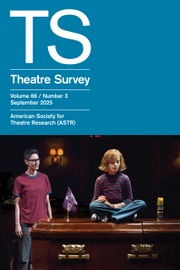No CrossRef data available.
Article contents
Anti-Semitism and Tsarist Theatre: The Smugglers Riots
Published online by Cambridge University Press: 08 August 2003
Extract
All theatrical protests are political. This is manifest in such cases as the premieres of Chénier's Charles IX or Hauptmann's The Weavers, but even when protests seem to be about the cost of admission (the O.P. Riots at Covent Garden) or xenophobia (the burning of the Astor Place Theatre), literary fashion (Hernani) or artistic innovation (Le Sacre de printemps), baiting bigots (Tartuffe) or épater-ing the bourgeoisie (Ubu Roi), the root cause can always be construed as political. Unrest, demonstrated within the playhouse or without, marks the evolution of a social consciousness reactive to whatever regime or authority controls the situation. Resistance (the attempt to impose a new order), no matter in which direction it moves across the footlights, engages with an established order.For a brief survey of English examples, see Sir St. Vincent Troubridge, “Theatre Riots in London,” in M. St. Clare Byrne, ed., Studies in English Theatre History in Memory of Gabrielle Enthoven, O.B.E. (London: Society for Theatre Research, 1952), 84–97.
- Type
- Research Article
- Information
- Copyright
- © 2003 The American Society for Theatre Research, Inc.


